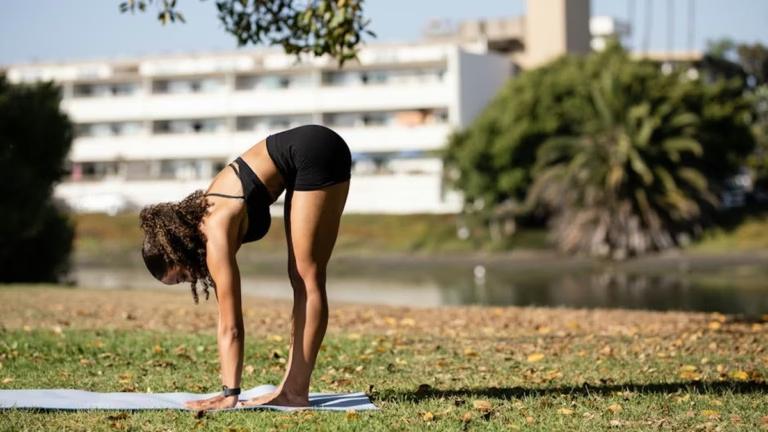Sleep Sanctuary: Optimize Your Bedroom for Deeper Sleep During Shorter Days
As the days grow shorter and the nights grow longer, many of us find our sleep cycles disrupted. The reduced sunlight hours can throw off our circadian rhythms, making it harder to fall asleep and stay asleep. But fear not! You can create a sleep sanctuary in your own bedroom, a haven designed to promote restful, restorative sleep, even when the sun is playing hide-and-seek. This guide will provide actionable tips to optimize sleep during these shorter days and help you achieve deeper sleep.
Understanding the Impact of Shorter Days on Sleep
Our bodies are naturally attuned to the rising and setting of the sun. This internal clock, known as the circadian rhythm, regulates various bodily functions, including sleep-wake cycles. When daylight hours decrease, our bodies produce more melatonin, the hormone that promotes sleepiness. While this might sound beneficial, the lack of sunlight can also lead to decreased serotonin production, which can affect mood and sleep quality.
Studies have shown a direct correlation between reduced sunlight exposure and increased instances of Seasonal Affective Disorder (SAD) and sleep disturbances. In fact, research suggests that people living in northern latitudes are more susceptible to these issues due to the drastic changes in daylight hours.
The Science Behind Sleep and Light
The suprachiasmatic nucleus (SCN), located in the hypothalamus of the brain, is the master regulator of the circadian rhythm. Light exposure, especially sunlight, signals the SCN to suppress melatonin production and promote wakefulness. Conversely, darkness triggers melatonin release, preparing the body for sleep. This is why consistent exposure to natural light during the day and darkness at night is crucial for maintaining a healthy sleep cycle.
Creating Your Sleep Sanctuary: A Step-by-Step Guide
Transforming your bedroom for sleep into a sleep sanctuary involves carefully considering several factors, from lighting and temperature to bedding and noise levels. Here’s how to get started:
1. Mastering Light Control
Light is a powerful disruptor of sleep. Minimizing light exposure in the evening and maximizing it during the day is essential.
- Blackout Curtains: Invest in high-quality blackout curtains to block out external light sources like streetlights and car headlights.
- Dim Lighting: Use dim, warm-toned lighting in the evening to signal your body to produce melatonin. Avoid bright, blue-light-emitting devices (phones, tablets, computers) at least an hour before bed.
- Sunrise Alarm Clock: Consider using a sunrise alarm clock that gradually increases light intensity in the morning, mimicking a natural sunrise and promoting a gentler wake-up.
2. Optimizing Temperature
A slightly cooler room temperature is ideal for sleep. Research suggests that the optimal temperature for sleep is between 60 and 67 degrees Fahrenheit (15.5 to 19.5 degrees Celsius).
- Thermostat Adjustment: Lower your thermostat a few degrees before bedtime.
- Cooling Bedding: Use breathable bedding materials like cotton or linen to prevent overheating.
- Fan or Open Window: Use a fan or open a window (if outside noise permits) to circulate air and maintain a comfortable temperature.
3. Soundproofing Your Sleep Space
Noise pollution can significantly disrupt sleep quality. Creating a quiet and peaceful environment is crucial. Boost Immunity This Fall!…
- Earplugs: Use earplugs to block out external noises.
- White Noise Machine: A white noise machine can mask distracting sounds and create a more consistent sound environment.
- Soundproofing Measures: Consider soundproofing measures like thick curtains, rugs, and acoustic panels to absorb sound.
4. Creating a Comfortable Bedding Oasis
Your bed should be a haven of comfort and relaxation.
- Supportive Mattress: Invest in a high-quality mattress that provides adequate support and comfort.
- Comfortable Pillows: Choose pillows that support your head and neck in a comfortable position.
- Soft Bedding: Use soft, breathable bedding materials that feel good against your skin.
5. Choosing the Right Colors
The colors in your bedroom for sleep can significantly impact your mood and sleep quality.
- Calming Colors: Opt for calming colors like blues, greens, and grays, which are known to promote relaxation.
- Avoid Stimulating Colors: Avoid bright, stimulating colors like reds, oranges, and yellows, which can increase alertness.
6. Establishing a Relaxing Bedtime Routine
A consistent bedtime routine can help signal your body that it’s time to sleep.
- Consistent Bedtime: Go to bed and wake up at the same time every day, even on weekends.
- Relaxing Activities: Engage in relaxing activities like reading, taking a warm bath, or listening to calming music before bed.
- Avoid Caffeine and Alcohol: Avoid caffeine and alcohol in the evening, as they can disrupt sleep.
Addressing Common Sleep Problems During Winter
The winter sleep tips below can help you navigate common sleep issues:
- Combatting SAD: Use a light therapy box for 30 minutes each morning to mimic sunlight exposure and boost serotonin levels.
- Vitamin D Supplementation: Consider taking a vitamin D supplement, as sunlight is the primary source of vitamin D.
- Regular Exercise: Engage in regular physical activity to improve mood and sleep quality. However, avoid exercising too close to bedtime.
Case Study: Transforming a Sleepless Bedroom into a Sleep Sanctuary
Sarah, a 35-year-old office worker, struggled with insomnia, especially during the winter months. She felt tired and sluggish throughout the day, impacting her productivity and overall well-being. After implementing the strategies outlined above, Sarah noticed a significant improvement in her sleep quality.
She invested in blackout curtains, lowered the thermostat in her bedroom, and started using a white noise machine. She also established a relaxing bedtime routine that included reading and taking a warm bath. Within a few weeks, Sarah was falling asleep more easily, sleeping more soundly, and waking up feeling refreshed. Pumpkin Detox: Post-Halloween Cleanse…
Frequently Asked Questions
Q1: How can I optimize my bedroom for better sleep?
This important question is covered in detail in the sections above. Review the related content for comprehensive answers.
Q2: What is a sleep sanctuary?
This important question is covered in detail in the sections above. Review the related content for comprehensive answers.
Q3: What are the best colors for a sleep-inducing bedroom?
This important question is covered in detail in the sections above. Review the related content for comprehensive answers.
Q4: How does shorter daylight affect my sleep?
This important question is covered in detail in the sections above. Review the related content for comprehensive answers.
Q5: What temperature is ideal for sleep?
This important question is covered in detail in the sections above. Review the related content for comprehensive answers.
References & Further Reading
For more information about Sleep Sanctuary: Optimize Your Bedroom for Deeper Sleep During Shorter Days, consider these authoritative sources:
-
Sleep Foundation
Comprehensive sleep health information and research.
Source: sleepfoundation.org -
NIH Sleep Health
National Institutes of Health sleep science and guidelines.
Source: nih.gov -
Mayo Clinic Sleep Guide
Medical sleep advice from Mayo Clinic experts.
Source: mayoclinic.org
These external resources provide additional scientific and medical insights.
Conclusion
Creating a sleep sanctuary is an investment in your health and well-being. By optimizing your bedroom for sleep, you can mitigate the negative effects of shorter days and achieve deeper sleep. Remember, consistency is key. Stick to your new sleep routine, and you’ll be well on your way to enjoying restful, restorative sleep throughout the year.





